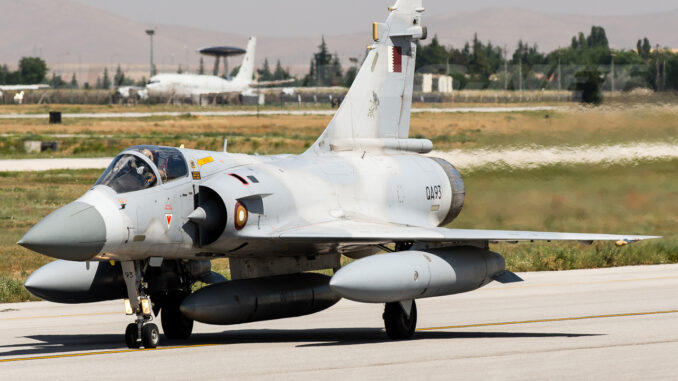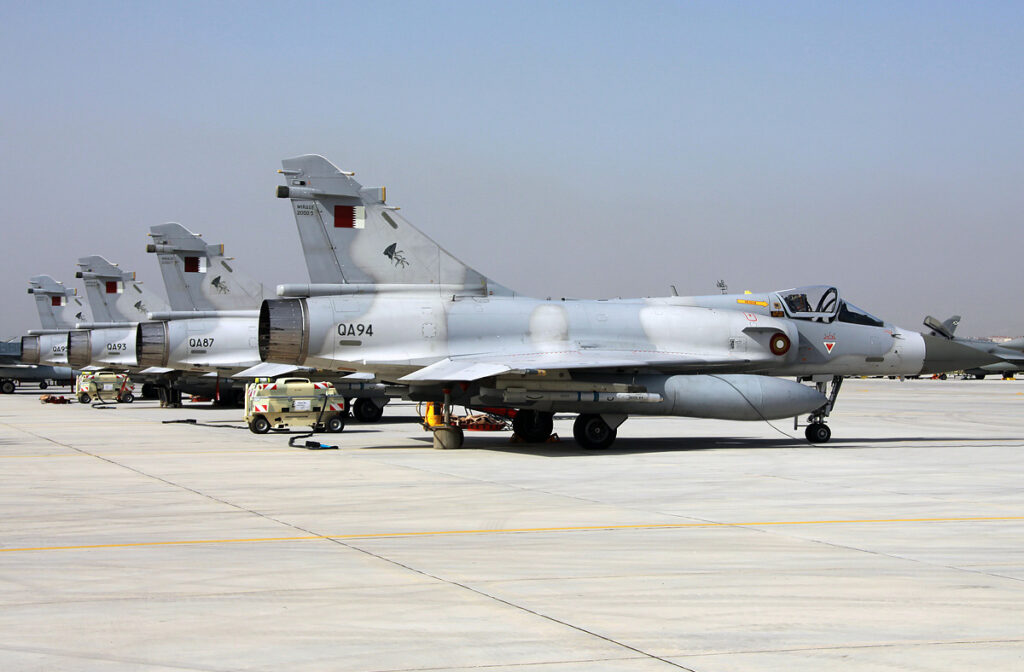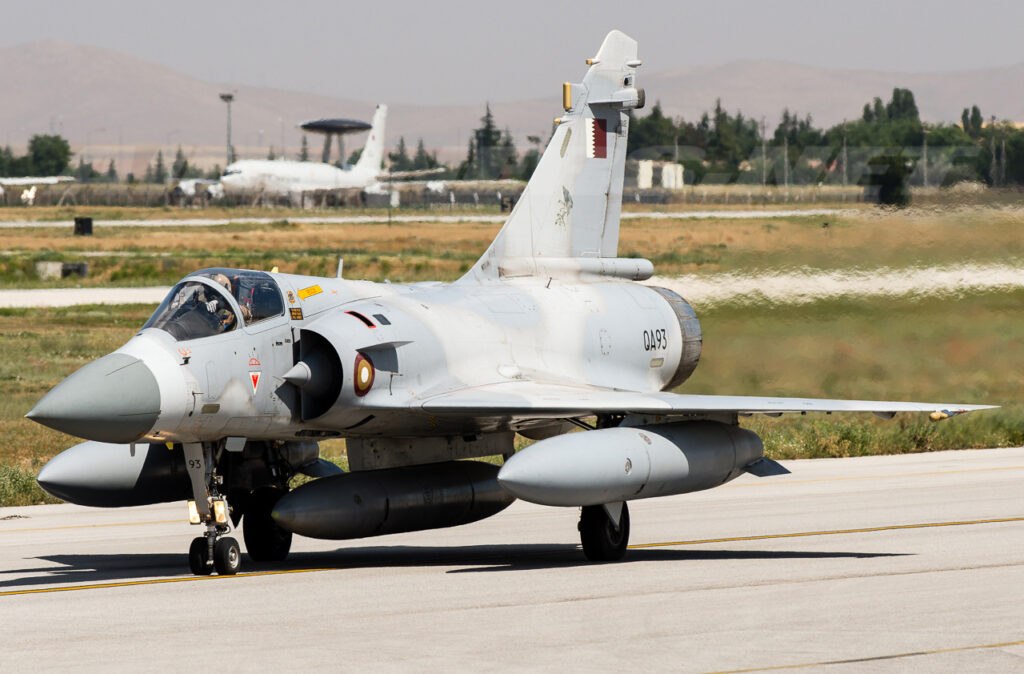
Qatar offers India 12 Mirage 2000 for INR 5,000 crores. Compatibility with the Indian fleet and defence implications.
Qatar has offered to sell 12 Mirage 2000-5 fighter jets to India, an offer valued at around INR 5,000 crores (around €600 million). Discussions in New Delhi highlighted the good condition of the aircraft and their compatibility with India’s Mirage 2000 fleet, facilitated by the use of identical engines. The potential acquisition is aimed at filling the Indian Air Force’s (IAF) fighter shortfall, while offering advantages in terms of maintenance and operational costs. However, India is seeking to negotiate a lower price for this transaction.

Background to the Qatari offer
Mirage 2000-5 condition and compatibility
Qatar has offered to purchase 12 Mirage 2000-5 multi-role fighter jets from Dassault Aviation. These aircraft, although slightly older than those currently used by the Indian Air Force (IAF), are in good condition, according to Qatari officials. The Mirage 2000-5 is a modernised version of the Mirage 2000, with improved avionics and enhanced combat capabilities.
The IAF’s Mirage 2000s are mainly Mirage 2000Hs and 2000Is, even more advanced versions with significant improvements in terms of radar, weapons systems and electronic countermeasures. Despite this, the compatibility of the engines, specifically the SNECMA M53-P2, greatly facilitates maintenance and logistics, reducing the cost and complexity of integrating the new aircraft into the existing fleet.
Financial and logistical aspects
The Qatari offer is valued at around INR 5,000 crores, or around €600 million. This amount includes not only the 12 aircraft, but also additional missiles and engines, which are essential to maintain the IAF’s operational capabilities. The price per aircraft would therefore be around 50 million euros, including the additional equipment.
Discussions are also focusing on reducing this cost, as India seeks to obtain a more advantageous offer. The financial aspects of this transaction are crucial, as they have a direct impact on the Indian defence budget, which is already under pressure to modernise its armed forces while maintaining strict control over spending.
Impact on IAF capabilities
Strengthening the fighter fleet
The acquisition of these Mirage 2000-5s would strengthen the IAF’s fighter fleet, which is facing a critical shortage. At present, the IAF has around 30 fighter squadrons, short of the 42 squadrons required to provide complete and effective coverage of potential threats. The addition of 12 Mirage 2000-5s would immediately increase the IAF’s capacity to deploy operational fighter aircraft.
The additional aircraft would also enable the IAF to better allocate its resources and maintain a more constant and responsive presence in strategic areas, particularly along the sensitive borders with Pakistan and China.
Operational and maintenance benefits
The compatibility of engines between the Indian and Qatari Mirage 2000s offers a significant advantage in terms of maintenance. By sharing common parts, the IAF can optimise its spare parts stocks and reduce maintenance lead times. In addition, the acquisition of additional missiles enhances the fleet’s engagement capabilities, increasing the IAF’s tactical flexibility.
This compatibility also facilitates the training of pilots and maintenance teams, reducing the time and costs associated with integrating new aircraft. Indian pilots, already experienced on the Mirage 2000, can quickly adapt their skills to the Mirage 2000-5, minimising transition time and maximising operational efficiency.
Geopolitical and strategic implications
Regional influence and alliances
The purchase of Mirage 2000-5 aircraft from Qatar not only strengthens the IAF’s capabilities but also has significant geopolitical implications. By sourcing from Qatar, India is diversifying its sources of military equipment, reducing its dependence on traditional suppliers such as Russia and France.
The deal could also strengthen bilateral relations between India and Qatar, paving the way for increased cooperation in other strategic areas, including energy and maritime security. Qatar, rich in energy resources, is a key partner for India in its quest for energy security.
Impact on regional tensions
Against a backdrop of growing tensions with China and Pakistan, the acquisition of new fighter jets improves India’s defensive posture. These aircraft offer a rapid and effective response capability to incursions and potential threats, thereby increasing India’s military deterrence.
The addition of Mirage 2000-5s to the IAF fleet could also have a deterrent effect on potential adversaries, demonstrating India’s willingness and ability to strengthen its defence capabilities despite budgetary constraints and logistical challenges.

Outlook and recommendations
Ongoing modernisation and diversification
To maintain a strategic edge, India must continue to modernise and diversify its armed forces. The purchase of the Mirage 2000-5 is an important step, but it is also crucial to continue integrating cutting-edge technologies and developing indigenous weapons production capabilities. Developing the local defence industry would reduce dependence on foreign suppliers and strengthen India’s strategic self-sufficiency.
International collaboration and technology transfers
Collaboration with countries such as France, which supplied the original Mirage 2000s, could include technology transfers and partnerships for the development of new weapons systems. This would enable India to benefit from the latest technological advances while strengthening its local production capabilities.
The Qatari offer of 12 Mirage 2000-5s presents a significant opportunity for India to strengthen its air defence capabilities. However, it is essential that India negotiates the best possible terms to maximise the benefits of this acquisition while minimising the costs.
War Wings Daily is an independant magazine.